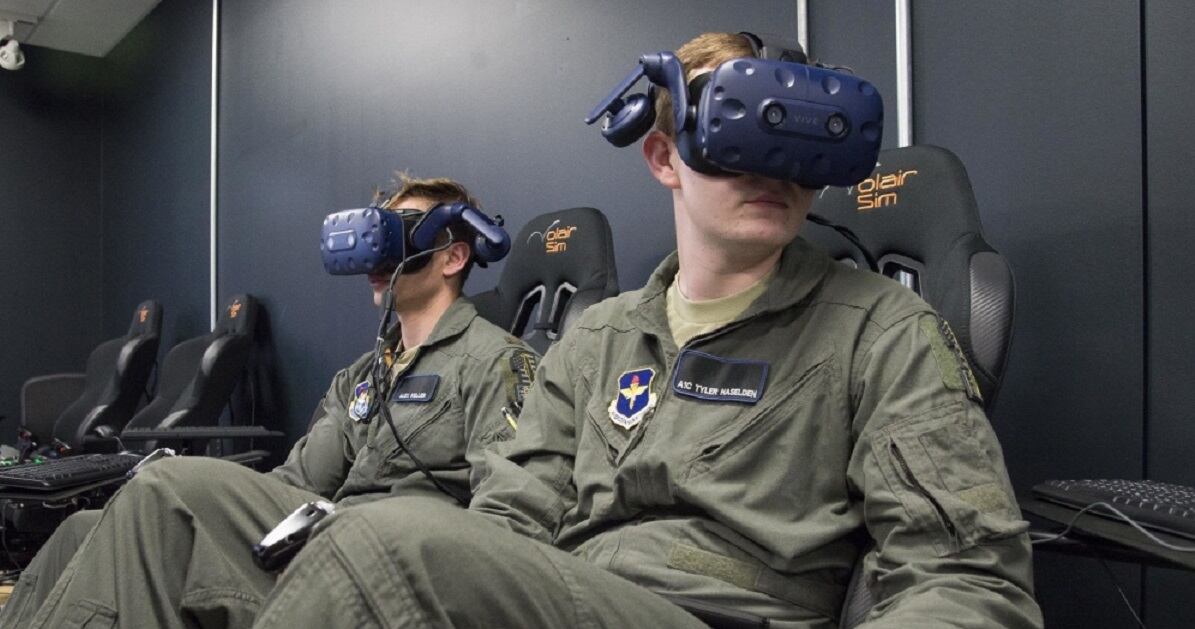Aspiring Air Force helicopter pilots are now learning to fly using virtual reality — and the first class to do so just graduated six weeks ahead of schedule.
The first six students to take part in the experimental VR-augmented training program — called Rotary Wing Next and nicknamed “Project da Vinci" after the famed inventor — graduated at Fort Rucker, Alabama, Oct. 11, Air Education and Training Command said in release that day.
Ultimately, the Air Force hopes to cut its vertical-lift aviator training from 28 weeks to 14 weeks, and to double the number of students it produces each year from 60 to 120, without adding more aircraft or flying hours.
“We’re seeing the vast potential of this program unfold right in front of us,” said Lt. Col. Jake Brittingham, commander of the 23rd Flying Training Squadron at Fort Rucker.
Project da Vinci is yet another addition to the Air Force’s rapidly expanding Pilot Training Next program. In February 2018, the Air Force began testing a system in Austin, Texas, using virtual reality goggles, advanced flight simulators, artificial intelligence and biometrics to teach aspiring aviators how to fly.
The Air Force feels the program has been a success, and is planning variations — under the rubric “Learning Next” — to teach other airmen how to do technical jobs such as maintenance. The Air Force has also brought the virtual reality pilot program to the Air Force Academy, and is planning a version for flying remotely-piloted aircraft.

Brittingham said in the release that the first Project da Vinci test, which supplemented flights in actual aircraft with virtual reality, cut aircraft flying time by about 35 percent. The students also got 15 more hours of practice time at aircraft controls by using virtual reality.
The program still used older, non-VR simulators for some events, Brittingham said.
The students who arrived at this specialized undergraduate pilot training-helicopter class on May 7 had no idea they would be the first to test VR training, Brittingham said, and took their first spin in a simulator the next day.
RELATED

But it also meant a significant learning curve in how the instruction would work, at first.
“The challenge was our contract instructors were not ‘under contract’ to teach using virtual reality technology," Brittingham said. "So our active-duty instructors were conducting the daily VR lessons with the test class in flight fundamentals they don’t normally teach.”
Despite those challenges, the VR training paid off, AETC said. Their introduction to VR during the first 19 days of the course, typically dedicated to academics, paid off the first time they got behind the controls of an actual helicopter.
“After 23.5 hours of VR instruction, students were able to hover, taxi and perform various other helicopter maneuvers unassisted by their instructor pilots on their very first flight,” said Capt. Matt Strick, innovation flight lead for the squadron. “We assessed the students to be at least seven days ahead of schedule at that point.”
The VR software currently features a Bell 412 utility helicopter, but it is being updated to the TH-1H primary trainer that the unit uses.
The Air Force plans to wait to try out another small group of candidates until the just-graduated class progresses through the formal training units to learn how to fly the UN-1N Huey, HH-60G Pave Hawk and CV-22 Osprey. That will allow the Air Force to gather feedback on how well these students did after learning through virtual reality.
In the meantime, the Air Force will add VR systems to the normal helicopter training syllabus to give students more chances to rehearse and repeat instructions and training flights.
Leonardo da Vinci is believed to be the first to dream up the concept of an aircraft that used a rotary device to lift vertically. His “Helical Air Screw” drawing outlining the basic concepts was made in 1493 — about 450 years before the first true helicopter would take off.
Stephen Losey is the air warfare reporter for Defense News. He previously covered leadership and personnel issues at Air Force Times, and the Pentagon, special operations and air warfare at Military.com. He has traveled to the Middle East to cover U.S. Air Force operations.





